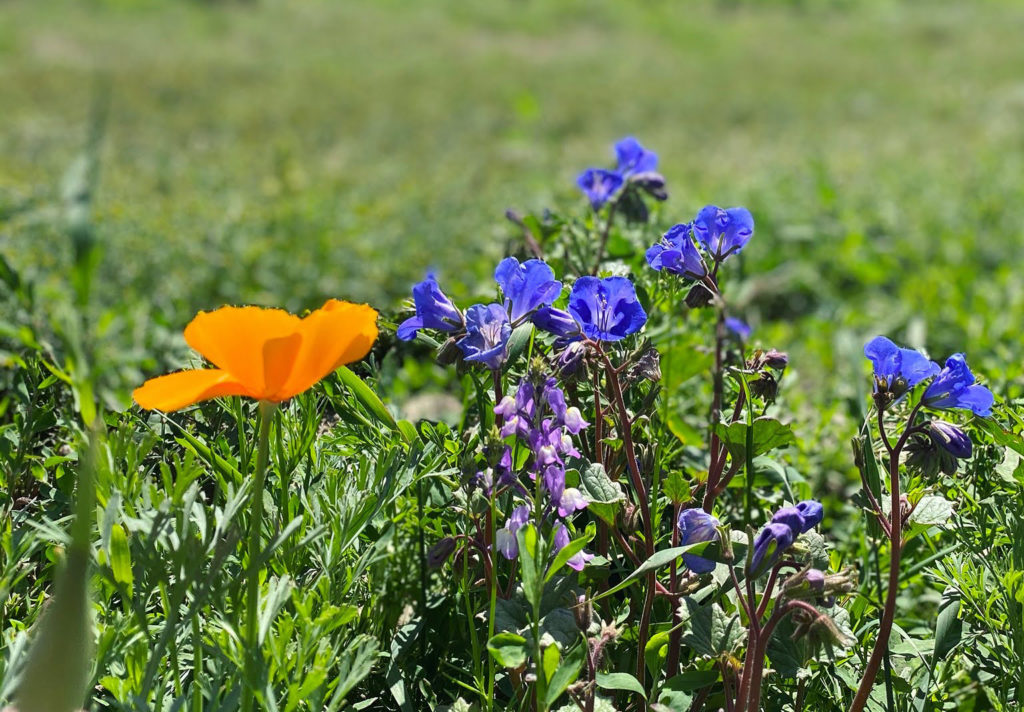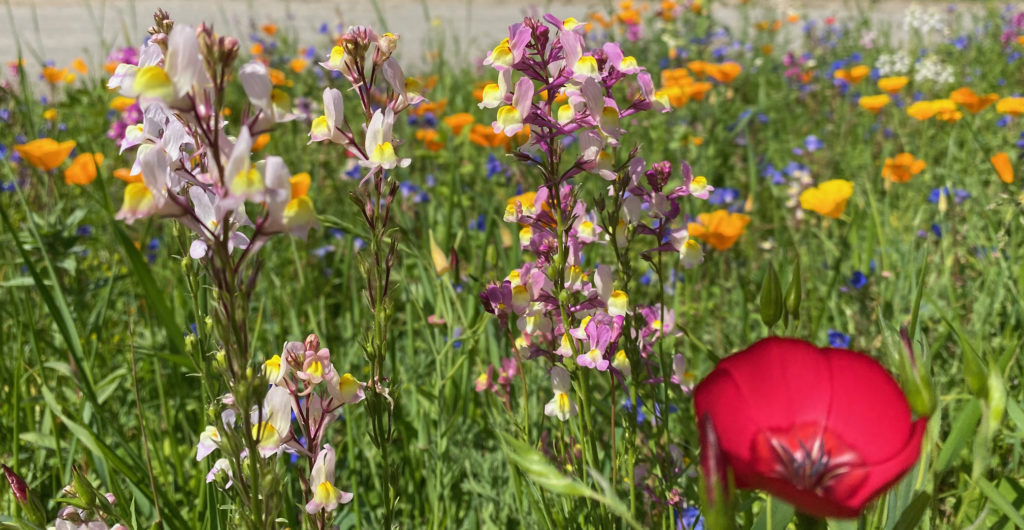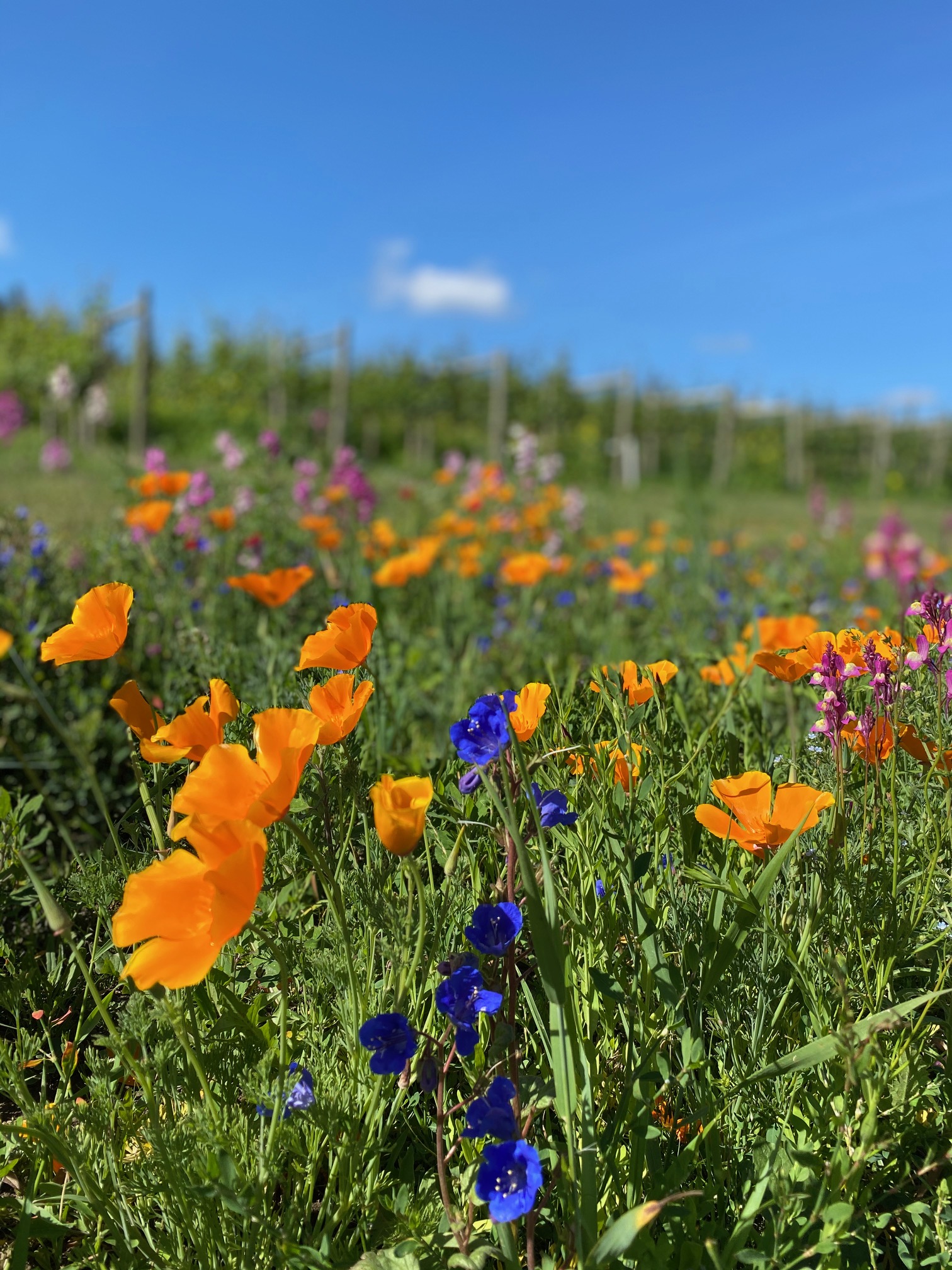Monte Creek Winery has been exploring utilizing plants native to the valleys of the Southern Interior of British Columbia. Cover crops are what winegrowers plant between the rows of grapes in vineyards in order to enhance grape quality and the vineyard environment. Many wineries have moved beyond the old-school image of bare dirt between our vineyard rows, but some wineries, like Monte Creek, are taking it a step further by utilizing native plants and by constructing specific blends for our soil type and vineyard quality targets.
Benefits
Depending on what the winegrower is trying to achieve, cover crops may have a variety of beneficial effects. Plantings of mustard or various other brassicas are known to have a fumigant effect and are able to reduce populations of vine harming parasitic nematodes. Certain vineyards may have a lack of nitrogen, and so a variety of legumes can be helpful in adding nitrogen to the soil without the need for chemical fertilizers or other external inputs. Conversely, some vineyards may have an excess of nitrogen, which may be less desirable as it may lead to extensive grapevine canopy and leaf growth, so savvy winegrowers may plant blends of grasses or various perennials to pull nitrogen from the soil. Other species with large taproots, such as radish, are useful for reducing the soil compaction that can occur when heavy tractors are used within the vineyard. While still other plants can enhance weed suppression, promote beneficial insects and pollinators, improve water holding capacity, or stabilize soils prone to erosion.

Though the use of cover crops has become quite common in the wine industry, winegrowers often stick to one or just a few species, and these species are often non-indigenous to B.C., let alone North America. Terroir, the elusive concept that all of the environmental factors within a vineyard will affect the flavour and character of a grape (and thus a wine), pertains not just to the slope, elevation, soil type, and precipitation within a vineyard, but also the plants that grow around and within it. Monte Creek reached the conclusion that if they were going to produce wines that were to taste absolutely true to place and the closest representation of the Similkameen valley in which the grapes were grown, then it was important that the plants growing alongside the grapes would need to be plants which could be naturally found in the area. Though it would presumably be easier to allow the weeds to grow, as they would undoubtedly have a number of indigenous plants among them, there would also be invasive, non-native species that have proliferated in southern B.C., and the resulting mix may not satisfy the rigorous viticultural goals that Monte Creek has set out to achieve.
Soil Types
Monte Creek knew they had a number of different soil types within our 110-acre vineyard near Keremeos. Though the winery perceived the terroir as having incredible potential, there were still unique challenges inherent to the different soils. Some blocks contained loamier, deeper soil where grape root systems would become large and able to access substantial nutrients, while other blocks had very thin topsoil layers and were incredibly rocky, which might overly inhibit vine vigour. In addition to the various soil profiles, some blocks were flat, while others were on steep hillside. As a result, Monte Creek created and seeded five unique blends of indigenous species, all with attributes designed to maximize the advantages of certain soil profiles as well as minimize any challenges created by them. For instance, deep and loamy profiles contained various species of wheatgrass and fescue, in order to compete with the vines and so reduce issues with excessive plant growth and crop yield. Steep and shallow hillside blocks were planted with ricegrass and drop seed, which are able to establish themselves on thin topsoils, while still providing erosion control. The shallowest soils were also planted with vetch, one of the few legumes native to the area, which would improve nitrogen availability and thus enhance vine growth in the challenging growing conditions of these blocks.

Monte Creek also aimed to ensure indigenous insects would benefit from our cover crop strategy. Improving pollinator and beneficial insect habitat not only improves the vineyard environment and the environments around it, but it can also have the effect of reducing the need for spraying within the vineyard. Many of the insects are natural predators of grape pests such as mites, leafhoppers, and thrips. In order to maintain these insects, a season-long food source of flowering plants was needed. Monte Creek chose species such as blue flax and yarrow within the rows, as they are low growing and can still flower even when the vineyard receives an occasional mowing. They also created wildflower ‘islands’, whereby select areas distributed throughout the vineyard would have a mix of native wildflowers, and as they were not within the rows they did not need to be mowed and could contain species that would grow taller before flowering. This mix was selected to have a variety of species that bloomed at different times of the growing season, such as balsamroot, blanket flower, and phacelia.
What grows between the rows of a vineyard may not be something many wine drinkers have considered. However, wineries like Monte Creek are demonstrating that in order to achieve the high-quality wine consumers expect while enhancing the environments the winery farms, the cover crop is a critical component in determining success. Utilizing these indigenous plants also ensures that when consumers try a Monte Creek wine they are getting the most accurate representation of Similkameen terroir.

